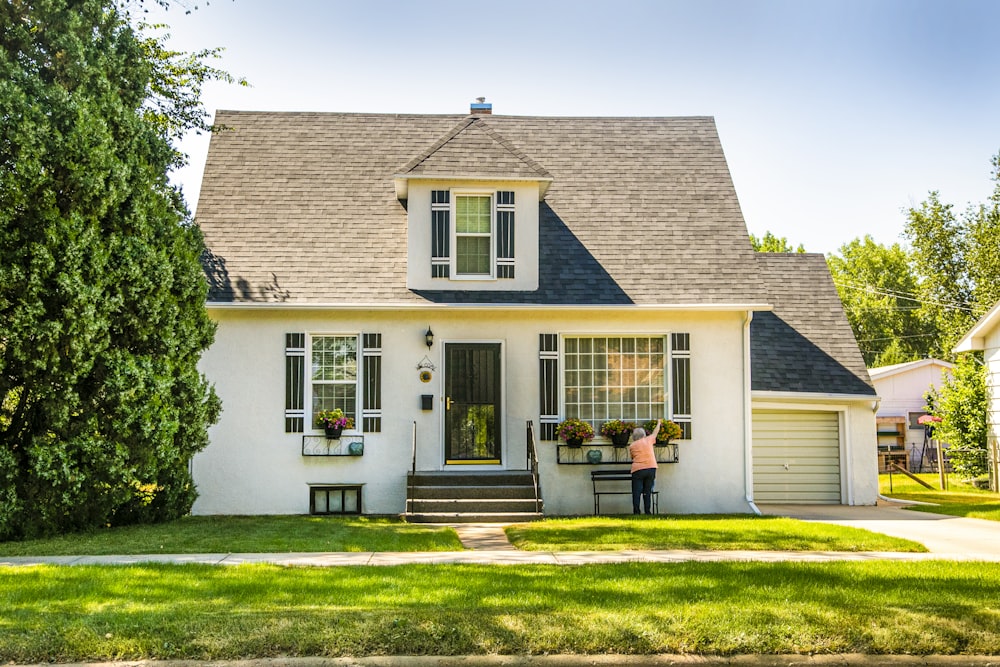Jay Vorhees at JVM Lending wrote a blog about the “Housing Inventory Crisis” recently, and I wanted to share a lightly edited version of it. Read on below:
Picture yourselves walking into your local Whole Foods and seeing 2/3 of the shelves entirely empty. That is exactly the state of the single-family residential real estate market today, according to Jason Hartman, a true expert when it comes to residential real estate.

Mr. Hartman was recently on the Rebel Capitalist YouTube show making this point, while also discussing real estate in general and why he is still buying. There are currently only 380,000 homes for sale in the entire country, per Mr. Hartman, which is less than 1/3 of our normal inventory of 1.2 million homes.
This massive inventory shortage both drives up prices and makes it increasingly difficult to even find a home – as most of us in the real estate and mortgage industries know well. So, why is inventory so low?
Builders are not building. I have mentioned this many times in previous blogs, but builders are bringing some 500,000 fewer units to market each year than they were prior to the 2008 meltdown. Freddie Mac says that we are “underbuilt” by 3.8 million units right now – and there are many reasons for this.
Starter homes are not profitable. In Northern California, it costs a builder $170,000 on average to prep a single lot for buildings (for permits and regulatory compliance) which is considerably less than the $6,000 it takes in Tennessee. And, unfortunately, California is not alone. When you couple these costs along with all of the other environmental and safety regulations (low flow water; insulated windows; fire safety; etc.) and inflated material and labor costs, starter homes are nearly impossible to build at a profit.
Labor shortage. This is a more recent phenomenon that was fostered by COVID and government policy, but current labor shortages are significantly exacerbating supply problems.
Millennials getting old. The oldest millennial is now 41, amazingly. What this means is that the largest generation to surge through our economy ever is now hitting its highest earning potential and thus buying homes at the fastest pace ever (in contrast to 2008 when the homebuying demographic was at its lowest point). This is a major reason inventory is getting mopped up.
Investors galore. Mr. Hartman reminds us that “buy and hold” single-family real estate investing is a relatively recent phenomenon, as it largely did not exist prior to the 1950s. But now, both individual and institutional investors are buying and holding real estate at levels never before seen, as both groups chase inflation hedges as well as higher and safer investment yields.

Buyers awash in cash. The video linked above also discusses the massive influx of cash into our economy, as there is currently $3.6 TRILLION sitting in checking accounts compared to only $1.2 TRILLION prior to the COVID crisis. When buyers have that much cash, they are more willing to bid aggressively and to just buy more homes in general.
This is what I found most encouraging when it comes to our mutual clients and their concerns about a bubble: Hartman, who knows more about residential real estate than any of us, is still buying like crazy; he has made 11 offers in the last two weeks alone.
Why? The millennial homebuying contingent will not peak until 2026, the inventory problem is not going away, and inflation! To repeat my inflation-hedge mantra: Housing is a hard asset and a natural inflation hedge; rents go up with inflation, making investment housing an even better hedge; and 3o-year mortgages are an “asset in an inflationary environment,” as I explain in this blog.
Kristin’s take: Coulda, woulda, shoulda. So many people sat back because, over a year ago, prices were too high. Now, they’re even higher. I also know many buyers that have been priced out of the Bay Area and have moved out of the area altogether. We also have an added issue: there is very little land to build on. It is usually tear-downs or flips, or you have to go farther out for new construction. As Jay notes above, a mortgage can be a fixed cost, something you know you’ll pay every month. When I bought my first house, I felt we were treading water to my upper lip. Within months, it all normalized. Sure. I could not go on the big vacation that year, but now, 21 years later, it was the best investment I have made. I can’t imagine where I would be if I had followed my divorce attorney’s advice not to buy out my ex-husband 12 years ago.



 Facebook
Facebook
 X
X
 Pinterest
Pinterest
 Copy Link
Copy Link

